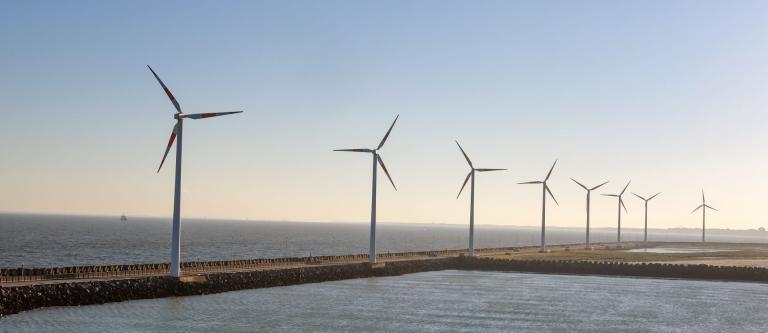
1. Introduction
Among the set of regulatory and energy policy measures set forth by Spain’s Royal Decree-law 23/2020, of June 23 (Real Decreto-ley 23/2020, de 23 de junio, por el que se aprueban medidas en materia de energía y en otros ámbitos para la reactivación económica; “RDL 23/2020” as per its Spanish initials), the momentum regained by auctions to grant support for renewable electricity (RES-E) has been of particular importance and highly expected by the sector.
It is not the first time that an auction scheme has targeted Spanish RES-E producers: three calls were organized between 2016 and 2017 pursuant to section 14.7 of the Electricity Sector Act (Ley 24/2013, de 26 de diciembre, del Sector Eléctrico; “LSE” as per its Spanish initials), yet with significant controversy and limited success.
Now, with the aims of boosting the economic recovery efforts following the COVID-19 crisis and advancing towards electrification and RES-E deployment targets, RDL 23/2020 has grounded the legal basis to redesign the auction mechanism in line with the energy transition ambitions embedded in the draft National Energy & Climate Plan (borrador de Plan Nacional Integrado de Energía y Clima 2021-2030, “PNIEC” as per its Spanish acronym). Consistently with practices in neighboring countries, Spain is moving forward to a system based on auctioning the right of RES-E producers to long-term fixed electricity prices.
However, most of the key design details on which success of the new scheme will ultimately depend are so far pending to be confirmed. Against this backdrop, we approach below the basics anticipated by RDL 23/2020 and the PNIEC, in order to provide critical insight on the forthcoming Spanish RES-E auction scheme. Building on existing doctrine, our analysis translates theoretical and empirical findings to the Spanish framework integrating its current status and pathway and identifying related energy policy goals and tensions. Questions addressed include what the key design elements of the future auctions are and whether those are context-consistent. Furthermore, we refer to potentially meaningful design calibrations that might be optimal to harness the full potential of the future auctions.
2. Policy orientation: inducing certainty to attract and boost investment
As often highlighted, auction design is highly context-specific, depends on policy priorities and is likely to involve various trade-offs that must be carefully balanced[1]. Hence, any critical approach to the technicalities of the auction model is bound to take its purported goals into consideration.
Cost-efficiency (minimization of overall support costs[2]) and cost-effectiveness (reaching RES-E targets at the lowest possible cost[3]) are typically important drivers. Opposingly, the main challenges concern ensuring quality competition and actual delivery of the projects. In this regard, creating a stable, reliable and long-term oriented framework that sustainably attracts quality competition may well be the key to success as competitive pressure forces auction participants to accept lower profit margins[4]. Conversely, policy unpredictability and instability have a direct impact on capital financing and project development costs, thus on the overall costs of RES-E deployment.
Accordingly, enhancing predictability and income stability for investors and financiers of new installations, fostering certainty along the industry value chain and passing on to consumers the savings associated to lower-cost renewable capacity deployment are now cherished as the priorities driving the new Spanish auction scheme. The goal is to create a climate of trust ideal to expedite the wide-scale investment decisions that are necessary to facilitate an efficient energy transition. Additionally, enhancing actor diversity, promoting citizenship participation and rewarding system flexibility are also important goals within the PNIEC[5].
In our view, such orientations appear reasonable in the Spanish circumstances: as certain intermittent, capital-intensive technologies become economically-competitive and achieve a high penetration level, the (necessary) control of support costs becomes of lesser concern than the essential regulatory and financial stability required to accelerate and underpin renewable capacity investment and deployment. Indeed, in the aftermath of turmoil related to policy-induced uncertainty in Spain, the outlined stability aspirations are worth praise.
Nevertheless, it is yet to be seen whether these well-meaning intentions will translate into a coherent regulatory framework. Success of the future auction scheme will depend on how well it is tailored to the national conditions and, to this effect, the devil lies in the details[6].
3. Essential design elements of the forthcoming Spanish auctions
Albeit basic traits of the future auction scheme have been outlined by RDL 23/2020, most of the key details are pending to be confirmed. This section provides an integrated overview of the elements we can expect and draws attention to the gaps we observe, contributing to the discussion with substantiated proposals.
a. Defining and granting economic incentives: generation-based price focus
Support granted by means of the forthcoming scheme is envisioned in RDL 23/2020 alternatively to the investment-based specific remuneration regime already in place, as a long-term fixed electricity price.
The auctioned product may be electricity generation, installed capacity or a combination of both, for which auction participants will place price-based bids (euros per generation unit): this is in line with the dominant international experience and contrasts sharply with past Spanish auctions wherein bids were placed for a given reduction percentage of the investment-based support. Instead, generation-based metrics are favored because they (i) incentivize improved plant design and operation (better allocative efficiency) and (ii) provide for better system integration to the extent generation volumes can be pre-planned (hence, lower indirect costs), even if there is less certainty on the total support costs for the auctioneer[7]. RES-E producers are thus encouraged to react to price signals and optimize their market income accordingly.
Notwithstanding, there remain critical implementation aspects to be assessed concerning the new remuneration framework.
On the one hand, the form in which such economic incentive will be provided is yet unclear. According to EU law, price support shall be granted as a market premium, either sliding or fixed. The choice will modulate market exposure of the projects and have impactful consequences in terms of their investment risk, capital costs and financing conditions. In this regard, sliding (variable) premiums are celebrated for effectively setting a floor price that will always be achieved during the support period; hence preferred over fixed premiums (constant add-ons to market prices) that expose investors to most risk, especially in scenarios of plummeting prices. Beyond, two-sided contracts for differences (“CFDs”) as those in the United Kingdom (which in practice secure a fixed remuneration range independent of market prices fluctuations) provide the most stable and predictable revenues and have the most positive impact on financing structures[8].
On the other hand, little is known concerning the bidding process that shall be followed obtain the right to the referred remuneration scheme. Its design will directly condition efficiency of the model. Coming back to the Spanish case, static, uniform pricing auctions conducted in the past attracted high competition, but were also prone to strategic bidding, ultimately leading to low project realization rates[9]. Departing from past experience, we incline in favor of pay-as-bid auctions in order to mitigate the ‘winner’s curse’, address potential differences between projects and reward added value in a market-responsive way. In this scenario, bidders would be encouraged to place offers tailored to the particulars of each project. Hence, the risks of speculation and under or over -compensation would be virtually eliminated without compromising the economic viability of the winner projects, as the prices they would receive would be set from the outset.
However, whereas price risk may be more or less mitigated by the economic configuration of the incentive as mentioned, quantity risk associated to generation volumes persists regardless. This explains why direct price support mechanisms are frequently complemented with tools to ensure that auction winners are able to sell their output (e.g. to an ‘off-taker of last resort’ such as in the UK)[10]. Introducing similar provisions in the Spanish case might be worth consideration, especially in a scenario of increased non-dispatchable RES-E penetration.
Furthermore, the so-far unknown duration of the support will also be determinant of policy effectiveness: longer timeframes significantly reduce project and financing risks[11]. Perhaps it will be linked to the ‘regulatory lifespan’ parameter under the specific remuneration regime currently in force pursuant to the LSE. From our standpoint, however, transplanting investment-based concepts conceived for an entirely different remuneration regime, inherently referred to the achievement of a given reasonable rate of return, may encounter implementation difficulties within the newly-devised generation-based scheme. Consequently, we stress the importance of devising adequate legal mechanisms to facilitate coexistence of the former and future support systems, ensuring their compatibility when possible while drawing the appropriate separations when necessary, in order to avoid incoherence undermining the efficiency, effectiveness and stability of the new scheme.
Moreover, whether the nature of the support pledge will be contractual or statutory is pivotal. In this regard, from the investor side, binding contractual commitments between auction winners and governmental institutions are preferred so that support conditions are well protected from future eventualities. This can have a stabilizing effect and prompt a decrease in political risk perception, especially relevant in markets such as the Spanish, with a history of so-called retroactive regulatory changes[12]. Contrarywise, as statutory provisions may be amended within legally-tolerated boundaries, the threat of future reforms and unexpected regulatory shocks dents the confidence of investors.
b. Promotion of technology and actor diversity: scope for discrimination
RDL 23/2020 opens the door for forthcoming auctions to include discriminatory elements according to the technical characteristics of the projects, their size, dispatchability, technological maturity and other relevant criteria to ensure the transition to a decarbonized economy. In addition, it foresees taking into consideration the particularities of renewable energy communities so that they may compete for access to the remuneration scheme on an equal footing.
Potentially, distinctions as such may cause market segmentation and weaken competition and efficiency[13]. In this case, however, we find that discrimination is justified because of the aims of current Spanish energy policy, which include channeling the long-term potential of particular technologies, encouraging actor diversity and small-scale local participation and maximizing sustained non-dispatchable RES-E penetration while avoiding system stability risks.
First, despite technology-neutral auctions are, in principle, the general rule at the EU-level, the available exemptions and de minimis rules lead to most justifications to depart from a strict neutrality being frequently accepted[14]. In this regard, previous auctions in Spain have explored every alternative (technology-neutral, technology-specific and multi-technology). Regardless of the multiple trade-offs these options involve, the fact is that, arguably, actual neutrality may be close to impossible to achieve in practice due to the varying characteristics among technologies[15]. In fact, even though the second Spanish auction was labelled technology-neutral, its design implicitly favored windpower[16]. Our position is that, whether future Spanish auctions are technology-neutral to a lesser or greater extent, the choice should be substantiated by an informed analysis of the relevant costs and constraints (for which actively involving stakeholders in the design process is key) and include flexible mechanisms to facilitate policy learning over time (e.g. preset monitoring and revision processes)[17].
Second, consistently with the objectives anticipated in the PNIEC, future auctions are foreseen to promote actor diversity and small-scale participation. This aims to increase social acceptability of the projects, diversify the risks of target default and those related to insufficient participation and exploit grid-edge potential[18]. It may also change the investor landscape and appetite[19]. Nevertheless, the specific design instruments to achieve these policy goals remain undefined. Options may include establishing discriminatory pricing and winner selection criteria, or limiting offer and/or award volumes to specific participants like in the UK[20].
Third, introducing locational criteria is justifiable to avoid adverse effects on the overall cost-effectiveness of the system when project site selection according to resources does not internalize grid integration costs[21]. Still, the way such considerations will be incorporated into the auction design is unclear. Given the trade-off between the concentration of capacity at productive sites (frequently involving higher transmission investment and redispatch costs), by contrast to locations closer to load centers (lower productivity, but also lower network extension and redispatch costs), we propose conducting single national auctions to ensure sufficient competition, but setting regional capacity quotas and allowing package combinatorial bids to channel synergic cost reductions[22].
Other than the above, diversity may also be targeted by customizing selective prequalification requirements or providing local content rules for projects to participate in auctions; but, so far, this is not expressly addressed in the PNIEC nor in RDL 23/2020. Then again, such arrangements should be integrally linked to broader industrial and energy policy orientations and be attentive to the ongoing market dynamics, hence we insist in the need to seek close and continuous dialogue with interested parties[23].
c. Additional matters: predictability, stability and project delivery safeguards
Although not expressly enacted as part of RDL 23/2020, the long-term capacity-based targets embedded in the PNIEC (59GW of additional RES-E capacity to be installed by 2030) reflect on the new model. It has been previously anticipated that reaching such targets would require auctioning support for, at least, 3 GW yearly.
Clear long-term targets, a schedule of regular rounds and pre-disclosed volumes are deemed best practices, crucial to foster transparency and reliability of the scheme, reduce the risks for investors and developers, incentivize participation, discourage speculative bidding and facilitate technological progress along the whole supply chain[24]. A long-term schedule can also lead to meaningful capital cost reductions[25]. It is acknowledged that regularly conducting auctions may induce collusion and challenge effectiveness in certain scenarios[26]; but, as an alternative, uncertainty liked to stand-alone auctions would be counterproductive in the current context. Overall, trading flexibility off for predictability and stability appears coherent in this case[27].
On another note, introducing volume caps would also contribute to cost-effectiveness to the extent there is supply excess in relation to the auctioned capacity[28]. This would actually be the case foreseen in the PNIEC: meeting the 2030 target would require installing roughly 6GW per annum, but support is only foreseen to be auctioned for half that capacity.
Nevertheless, it is yet to be confirmed whether the upcoming developing regulations will pre-set auction volumes and, if so, whether any flexibility mechanisms will be foreseen for target updates (in such case, we believe discretionality should be limited by a clear set of rules providing under what circumstances prospective adjustments can be admissible). On this matter, it is worth noting that pre-defined volumes also contribute to cost-predictability so that support levels are planned and manageable beforehand, thus mitigating policy reversal risk arising from sudden deviations. Hence, the overall stability of the scheme would gain credibility and future developments would be encouraged to continue over time[29].
Considering the importance of ensuring project delivery, especially in light of the targets embedded in the PNIEC, it strikes that regulations currently in force are silent regarding the mechanisms to address such concern. In this regard, pre-qualification criteria and milestones, commissioning deadlines and penalties have demonstrated to be key tools to counter the delivery challenge[30]. Notwithstanding, their right parametrization may be challenging: they may come at the cost of a risk premium[31], require more capital investment upfront and, consequently, impact the willingness or capability to finance a project[32]. In addition, a certain degree of flexibility to adapt projections to the particular circumstances is in any event desirable.
Based on past Spanish experiences, we expect the new auction scheme also to include financial (bid bonds) and material pre-qualification requirements, development and completion milestones and economic forfeits (bond seizures) as penalties, although the appropriate calibrations should be introduced in order to facilitate investment and financing decisions. In this sense, rather than maintaining stringent project due dates, we propose projects should be given a penalty-free window during which the bid capacity can be commissioned, following the example of the UK[33]. Moreover, Spanish regulations should ideally clarify the circumstances under which project modifications or withdrawals shall be penalty-exempt, since current case-by-case analysis leads to significant uncertainty and frequent controversy in practice.
4. Conclusions
In general terms, our initial impressions of the foreseeable future Spanish auctions under RDL 23/2020 are positive in accordance with their policy-induced potential to encourage and channel sustained RES-E investment in line with the energy transition targets. At a first glance, it can be anticipated that some critical drawbacks of the former auction design have been tackled. We observe noteworthy advancements towards a more reliable, long-term framework oriented to provide generation with efficiency, effectiveness, flexibility and diversity market-based rewards.
Even so, subject to the abovementioned caveats: most of the key design details are pending to be confirmed and, in any event, the final outlook and practical success of future auctions is yet to be evidenced. Certainly, there is still scope to sharpen future auctions according to the goals pursued and the reality of the sector so that the optimal signals reach the stakeholders involved.
In this sense, we insist on the importance of following a coordinated approach, strategically involving recurrent dialogue with agents within the sector. This would contribute to overcoming informational barriers, circumvent undesired interferences and market distortions, facilitate learning from every perspective and provide a political and regulatory response that is consistent with the structural and conjunctural needs of the Spanish electricity system from time to time. Thus begins the pathway towards a clean, fair, reliable and economically competitive energy transition as provided by RDL 23/2020.
[1] Enrico Botta, “An Experimental Approach to Climate Finance: the Impact of Auction Design and Policy Uncertainty on Renewable Energy Equity Costs in Europe” (2019) 133 Energy Policy
[2] Friedem Polzin and others, “How Do Policies Mobilize Private Finance for Renewable Energy?—A Systematic Review with an Investor Perspective” (2019) 236 Applied Energy
[3] Malte Gephart, Corinna Klessmann and Fabian Wigand, “Renewable Energy Auctions – When Are They (Cost-)Effective?” (2017) 28 Energy & Environment
[4] Mak Dukan and others, “Effects Of Auctions On Financing Conditions For Renewable Energy: A Mapping Of Auction Designs And Their Effects On Financing” (2019) AURES II
[5] Pablo del Río and Christoph Kiefer,“The future design of renewable electricity auctions in Spain. A comment” (2019) 9 Renewable Energy Law and Policy Review
[6] Pablo del Río, “Designing Auctions for Renewable Electricity Support. Best Practices from around the World” (2017) 41 Energy for Sustainable Development
[7] Pablo del Río (n 6)
[8] Mak Dukan and others (n 4)
[9] Friedem Polzin and others (n 2)
[10] Enrico Botta (n 1)
[11] Friedem Polzin and others (n 2)
[12] Mak Dukan and others (n 4)
[13] Pablo del Río (n 6)
[14] Lars Jerrentrup and others, “Technology-Neutral Auctions for Renewable Energy: EU Law vs. Member State Reality” (2019) 16 Journal for European Environmental & Planning Law
[15] Jan Kreiss, “Challenges In Designing Technology-Neutral Auctions For Renewable Energy Support” (2019) 3 IAEE Energy Forum
[16] Pablo del Rio, “Designing Auctions for Renewable Electricity Support: The Case of Spain” (2017) 8 Renewable Energy Law and Policy Review
[17] Paul Lehmann and Patrik Söderholm, “Can Technology-Specific Deployment Policies Be Cost-Effective? The Case of Renewable Energy Support Schemes” (2017) 71 Environmental and Resource Economics
[18] Pablo del Río and Christoph Kiefer (n 5)
[19] Mak Dukan and others (n 4)
[20] Friedem Polzin and others (n 2)
[21] Malte Gephart, Corinna Klessmann and Fabian Wigand (n 3)
[22] Martin Bichler and others, “Market Design for Renewable Energy Auctions: An Analysis of Alternative Auction Formats” [2019] SSRN Electronic Journal
[23] U.E. Hansen and others, “The Effects of Local Content Requirements in Auction Schemes for Renewable Energy in Developing Countries: A Literature Review” (2020) 127 Renewable and Sustainable Energy Reviews
[24] Pablo del Río (n 6)
[25] Enrico Botta (n 1)
[26] Marie-Christin Haufe and Karl-Martin Ehrhart, “Auctions for Renewable Energy Support – Suitability, Design, and First Lessons Learned” (2018) 121 Energy Policy
[27] Pablo del Río and Christoph Kiefer (n 5)
[28] Malte Gephart, Corinna Klessmann and Fabian Wigand (n 3)
[29] Friedem Polzin and others (n 2)
[30] Malte Gephart, Corinna Klessmann and Fabian Wigand (n 3)
[31] David Matthäus, “Designing Effective Auctions For Renewable Energy Support” (2020) 142 Energy Policy
[32] Mak Dukan and others (n 4)
[33] Enrico Botta (n 1)
ElDerecho.com no comparte necesariamente ni se responsabiliza de las opiniones expresadas por los autores o colaboradores de esta publicación








